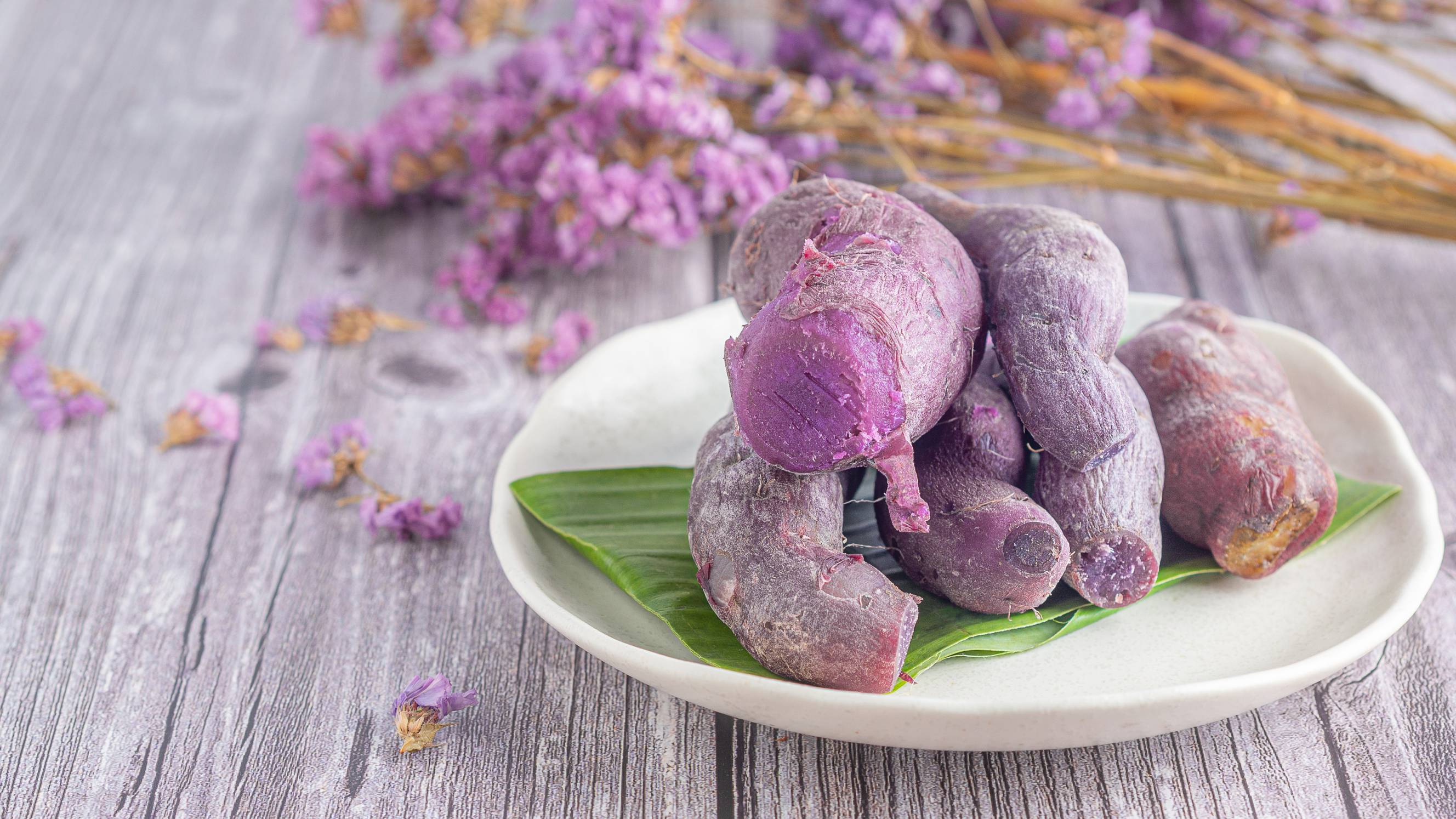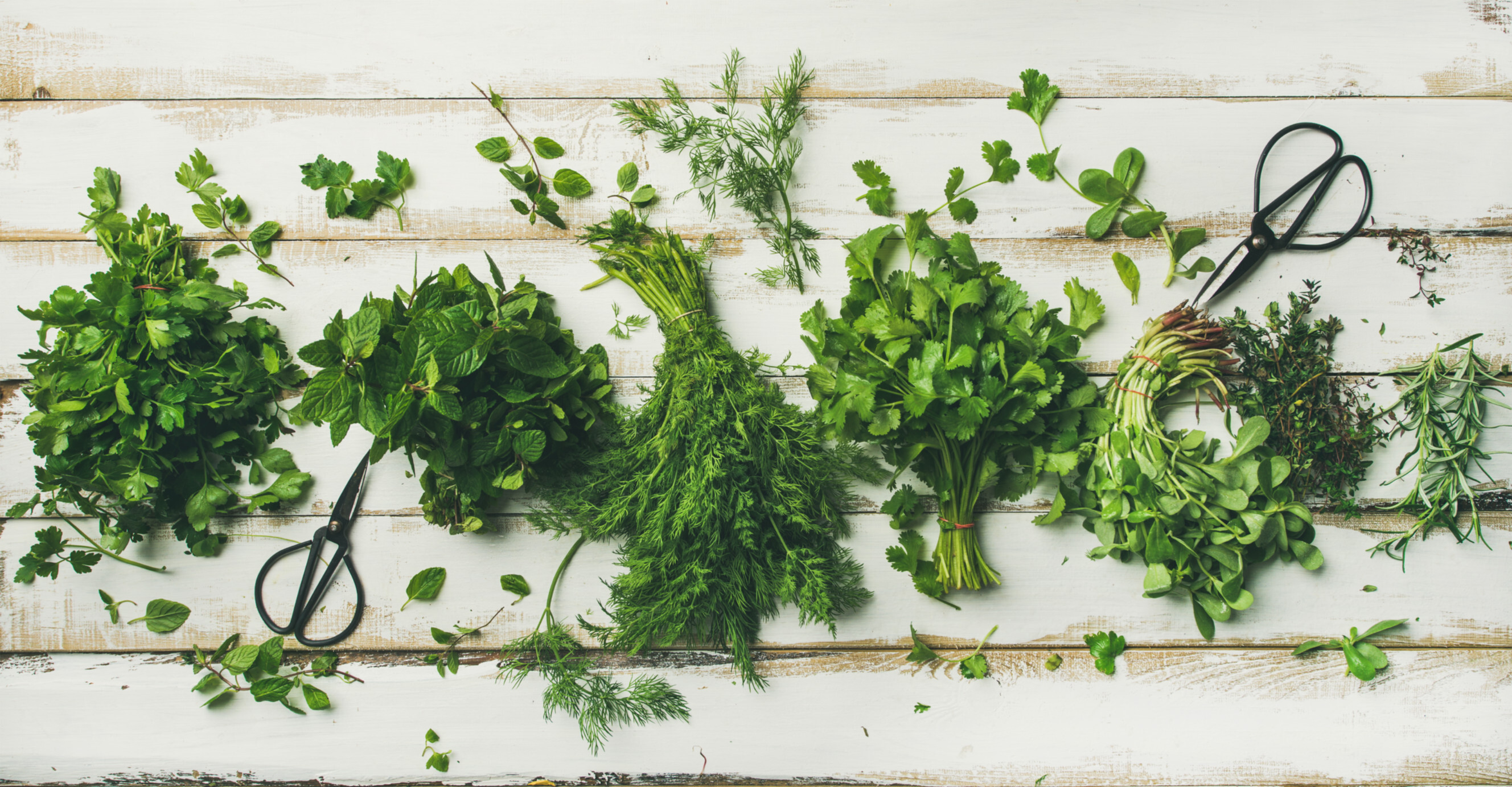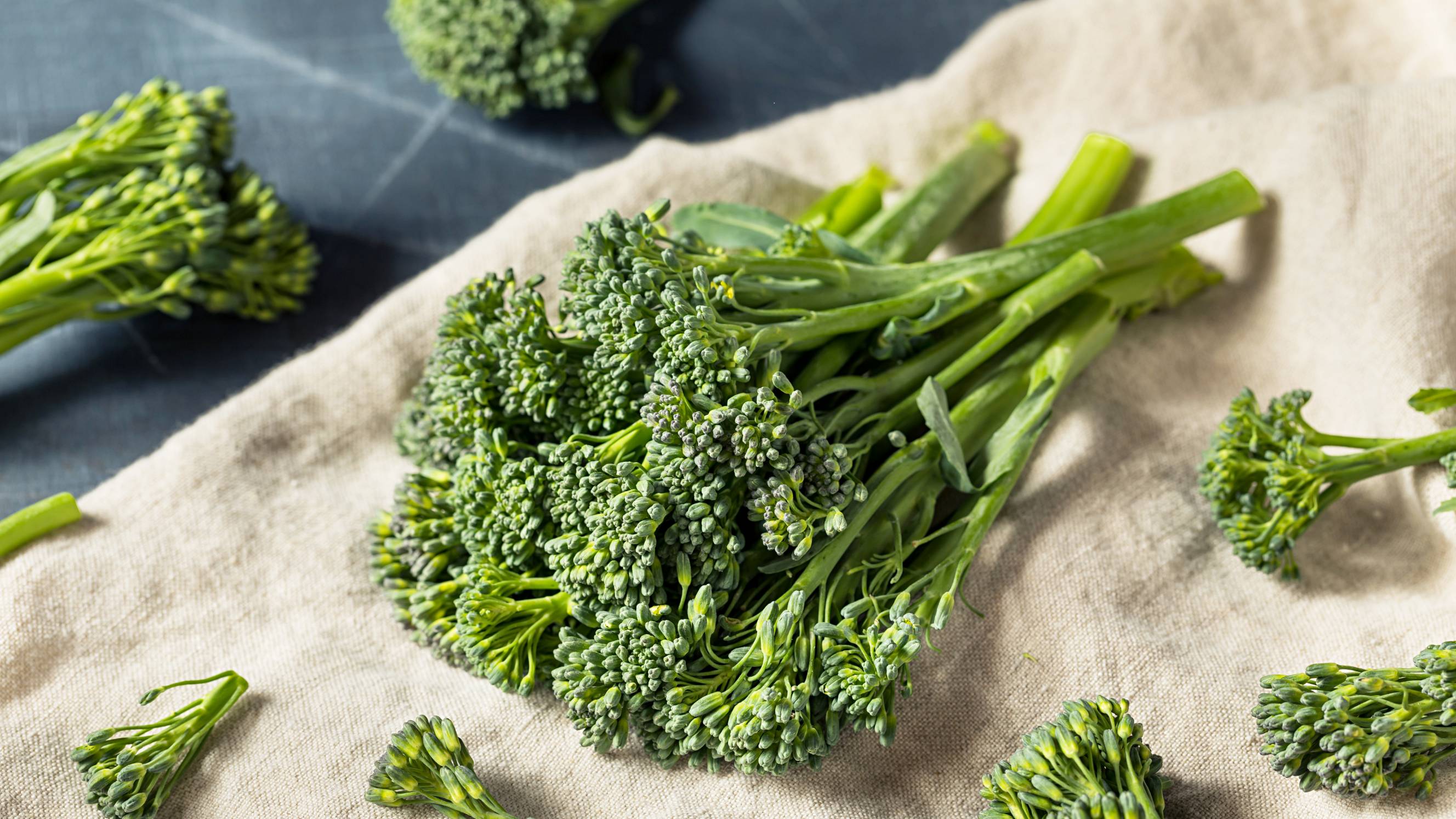- Home/
- Comparisons/
- Fresh Food Delivery/
- Butternut Squash vs Pumpkin
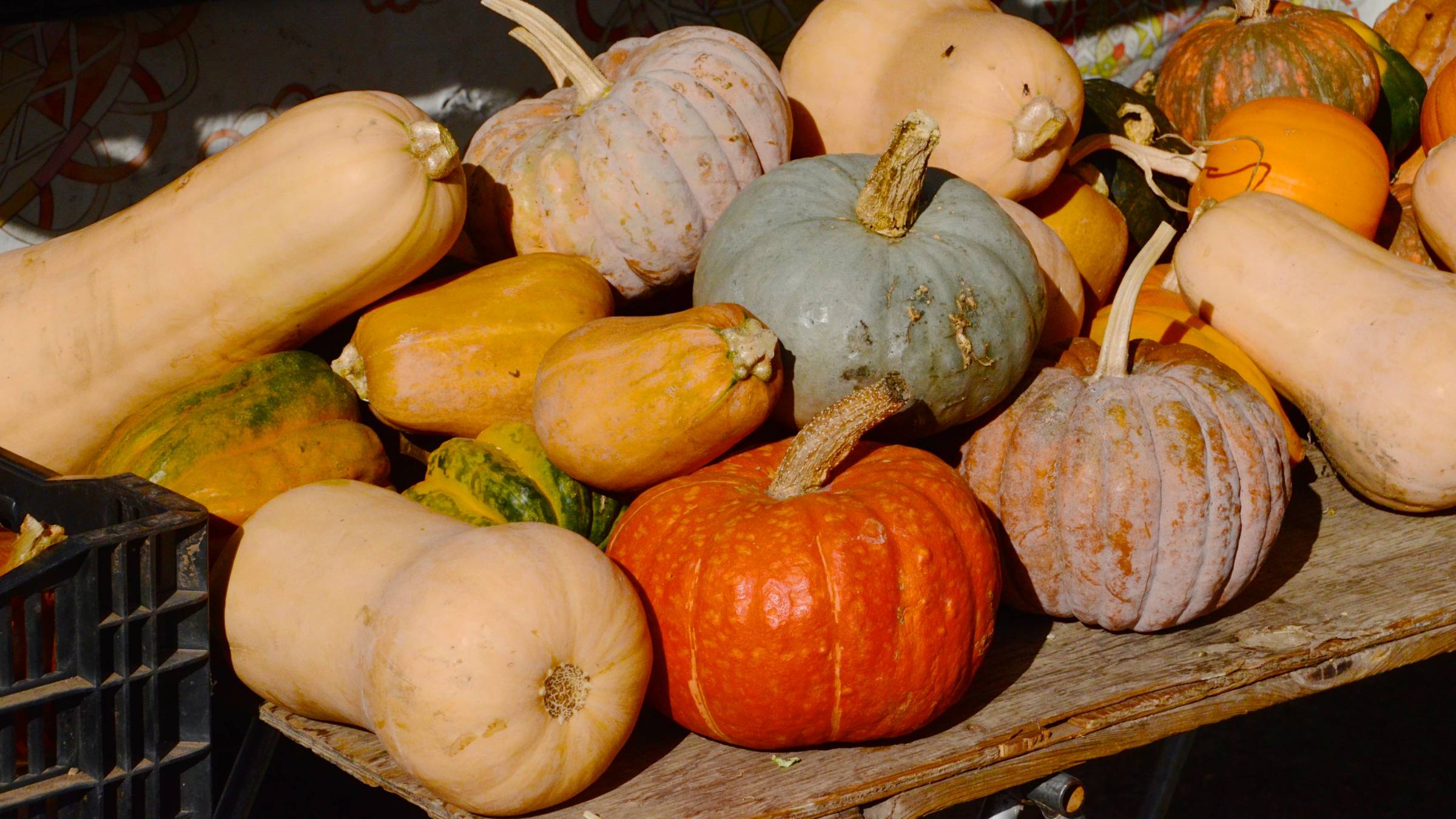
Butternut squash vs pumpkin: What’s the difference?
Comparing butternut squash and pumpkin based on appearance, taste, and more
Have fresh produce deliveredLast Updated on
Key Facts
- Butternut squashes are a winter squash variety well-known for their long neck, bulbous end, and yellow skin with bright-orange flesh. They typically grow year-round but mostly peak during autumn.
- Pumpkins are winter squashes that reach their full maturity during autumn, particularly from October through November. They are a popular ingredient for purees and pies because they help enhance flavour.
Do you ever get confused between pumpkins and butternut squashes when buying groceries? Do you wonder if they are fruit or vegetable?
These types of produce belong to the same family, but they significantly vary. These differences affect your budget, recipes, and preferences. This butternut squash vs pumpkin guide clearly spells these factors out so that you choose the right one all the time. You can also use the information when working with a health and wellness specialist.
What is butternut squash?
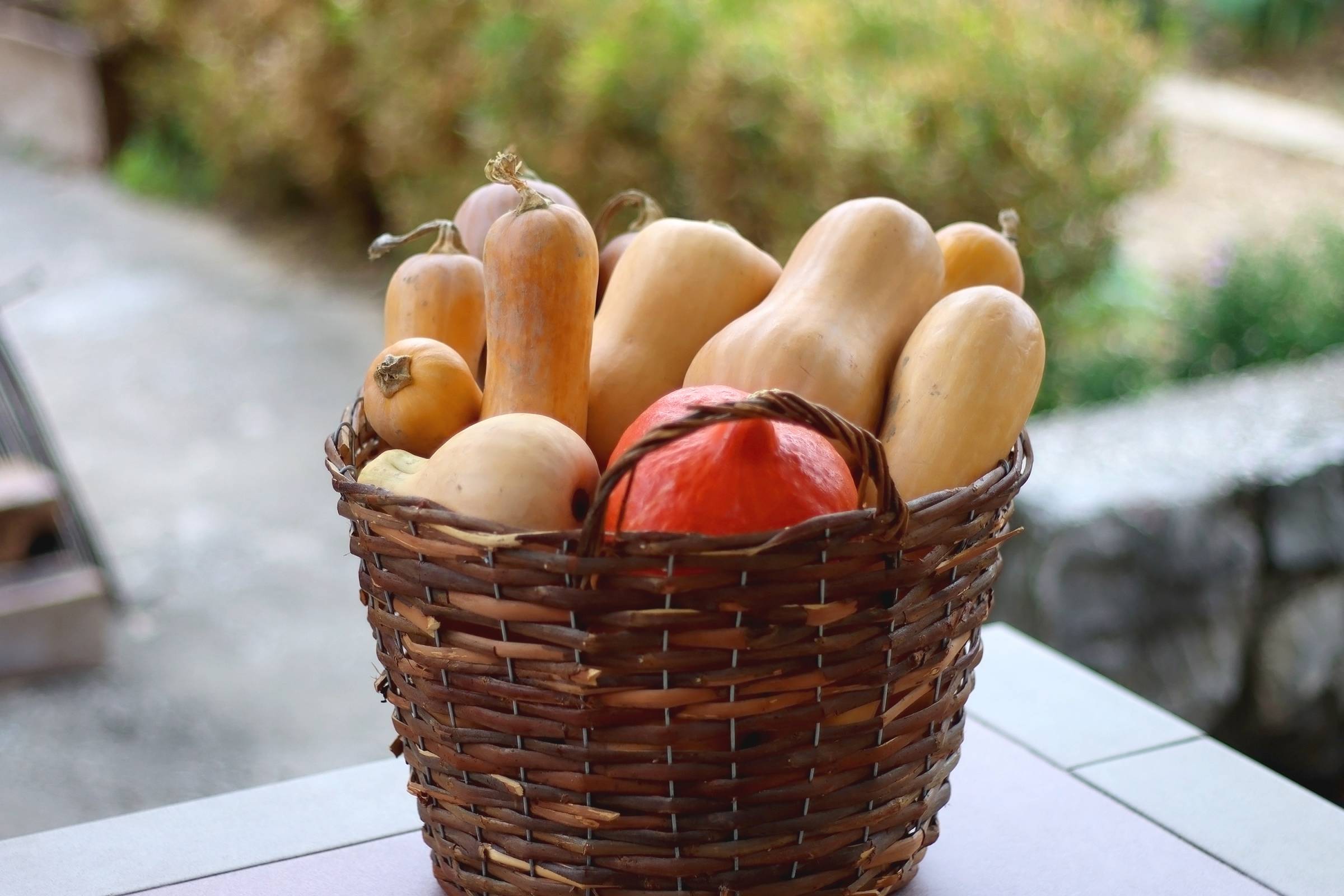
A butternut squash (Cucurbita moschata) is a type of winter squash that grows on a vine. It features a long neck, a bulbous bottom, and tan or golden yellow skin with bright orange flesh. It typically ranges from about three to five pounds in size when mature.
Botanically fruit, butternut squashes originated in South America, mainly Mexico and Guatemala, over 5,000 years ago. It is unclear how it reached Europe, but historians say that Christopher Columbus helped introduce it into the continent after journeying in North America, where it was already famous. By the 17th century, these squashes were already in English gardens.
What is a pumpkin?
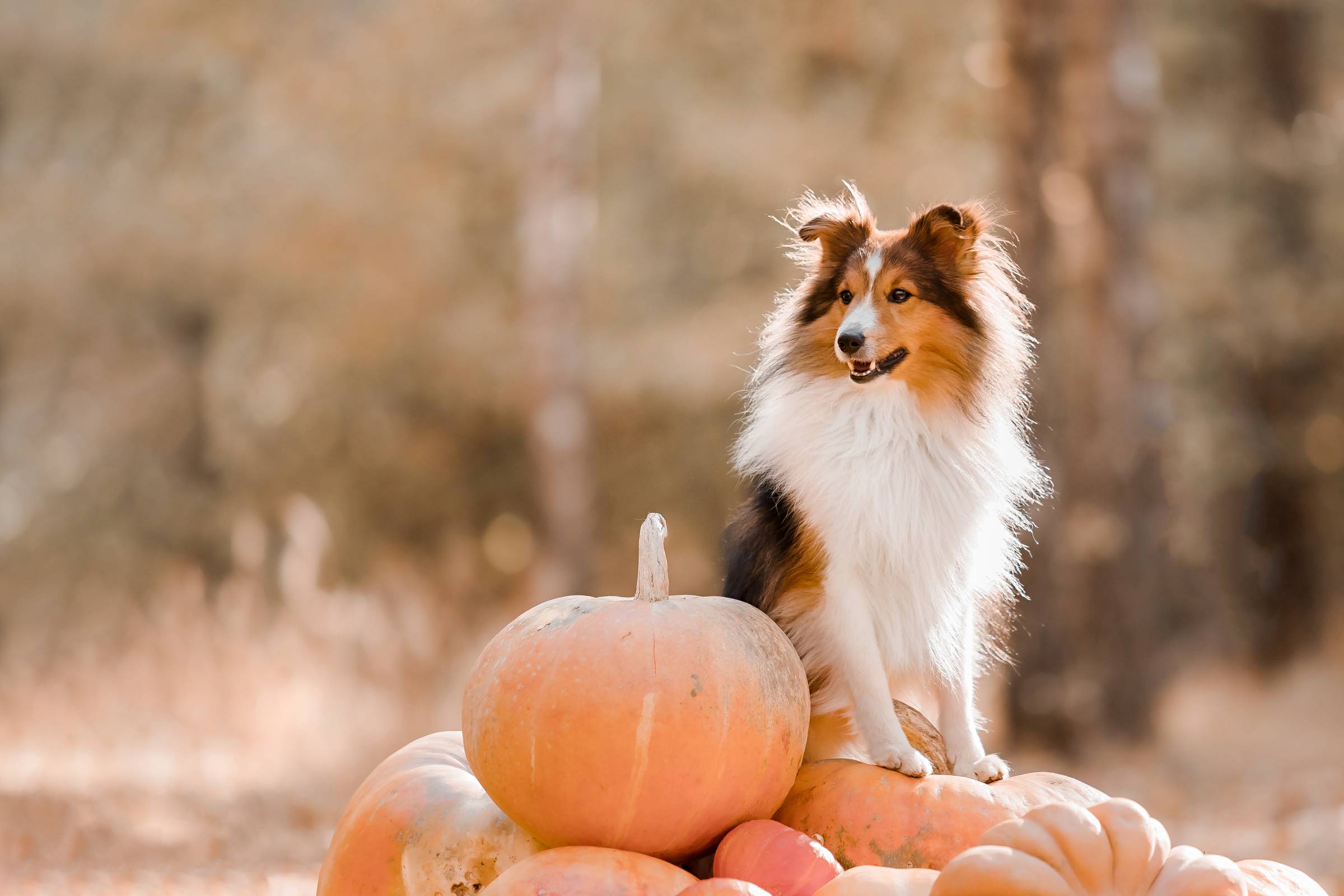
A pumpkin is a winter squash that is round or oval in shape. The most common varieties are large, usually ranging from 10 to 20 pounds. Giant pumpkins grown for contests can reach over 1,000 pounds. Most parts of a pumpkin are edible and highly nutritious, including the flesh, seeds, and even flowers.
Pumpkins have thick, orange or yellow skin, with orange flesh inside and seeds in the hollow inner cavity. Some varieties may be white, green, or grey. They are in season in autumn, especially in October, which is when they are frequently used for Jack-o-lantern carvings for Halloween.
Pumpkin vs butternut squash: How are they different?
Butternut squash and pumpkin belong to the same gourd or Cucurbitaceae family, which also includes around 900 species of flowering plants, such as melons, zucchinis, and cucumbers. That they originate from flowers also makes them fruits, contrary to popular belief.
But is butternut squash a pumpkin? No, it is not, and the following sections compare these two types of produce comprehensively.
In terms of cost
In general, a pumpkin and a butternut squash cost less than £2 in most grocery shops, including Tesco. However, many factors affect the final price. One is variety.
A munchkin pumpkin costs less than £0.50 at Aldi’s, while a medium-sized one is around a pound at Asda. A novelty option is slightly higher than the others because farmers grow them for a specific purpose, usually as Halloween decorations.
Another is seasonality. You might find the cost of a butternut squash more stable than a pumpkin because it is available all year round.
In terms of appearance
The primary difference between butternut squash and pumpkin is in the appearance:
Shape: They have different shapes. Butternut squashes have an elongated, oval, or pear shape with a wider rounded bottom and a narrower, curved neck. Pumpkins have a more spherical shape, often with slight ribbing or flattenings on the sides.
Size: A butternut squash is generally smaller, averaging three to five pounds. A typical pumpkin is much larger, in the range of 10-20 pounds.
Colour: Butternut squashes have tan or pale yellow skin, whereas pumpkins have a deeper orange colour on their exterior. The flesh differs too. The butternut squash features solid bright-orange flesh, while the pumpkin insides are more stringy and lighter orange.
Skin texture: Butternut skin tends to be smooth and thin, with minimal ridges. Pumpkin skin has a thicker, tougher rind with visible ridges and ribs covering the exterior surface.
Stem: Butternuts have straight small stems attached to the narrow neck. Pumpkins have thick, curled vines stemming from the top instead of a straight stem.
Seeds: Butternut seeds are flat and oval-shaped with a white outer shell; they are in the blossom end of the plant. Pumpkin seeds are more rounded on the edges and light green when shelled.
In terms of taste

Another main difference between butternut squash and pumpkin is the taste. When raw, pumpkins are mildly sweet, like a cantaloupe or honeydew. They are also slightly earthy and grassy, not unlike the summer squash zucchini.
Most people prefer to eat pumpkins cooked or baked because the process intensifies the produce’s sweetness. On the other hand, pumpkin puree has a creamy and smooth texture, while the nutty flavour emerges when roasted and added with certain spices.
The taste also varies according to the pumpkin type. Sugar pumpkins are the sweetest, making them ideal for pies and desserts. Field pumpkins are less grainy or stringy but more starchy; they are suitable for making dishes creamier.
What does butternut squash taste like? It has a richer, nuttier, more savoury flavour. Some describe it as almost brown or caramel sugar like with hints of spice. A cooked butternut squash also has a different texture than raw. It is creamy, silky, and smooth, like a sweet potato. It is also more tender than pumpkin.
In terms of nutritional value
Both pumpkin and butternut squash offer many health benefits whether eaten raw or cooked, except for minor nutritional differences:
Dietary fibre: Butternut squash contains more fibre than pumpkin at seven grams.
Carbohydrates: The squash gives more carbohydrates than the pumpkin.
Protein: Pumpkin has twice the amount of protein than a butternut squash at four grams.
Vitamins and minerals: Pumpkins are excellent sources of riboflavin (B2), copper, and iron. They also have slightly more vitamin E (alpha-tocopherol) than butternut squash at 22% of the recommended daily intake (RDI). Butternut squash provides nearly 460% of the RDI of vitamin C and over 50% of the RDI of vitamin A carotenoids, such as beta-carotene. It also has 15% RDI magnesium compared to 13% in pumpkin.
Calories: One squash (250 grams, cooked) is 82 calories. A canned pumpkin is 137.
Seeds: The nutritional value of butternut squash seeds (one cup, roasted) is 285 calories, of which 104 comes from fat. It provides over 40% of RDI of magnesium, 12% RDI of iron, and 4% RDI of calcium. An ounce of pumpkin seeds (pepitas) is around 86 grams, of which 7 grams is fat. They are also excellent sources of copper, phosphorus, and zinc.
In terms of versatility
You can roast, saute, and bake (into bread and pies) butternut squash. You can also puree or spiralise it into ‘noodles’. Its flavour pairs well with sweet and savoury ingredients like bacon and butter. For aroma and texture, combine it with vegetables, like kale, spinach, and even summer squash, like zucchini, for a hearty, delicious salad.
Pumpkins are more limited, working better for baked goods (think pumpkin pie) or being incorporated into soups as pumpkin puree to enhance their flavour. Professional chefs also make roasted pumpkin. Outside their culinary uses, pumpkins are the stars during the Halloween season as decorations, such as Jack-O-lanterns.
In terms of availability

Butternut squash and pumpkin differ in terms of their availability throughout the year. Although both are types of winter squash, butternut squash is available year-round in most grocery stores, with peak season being autumn and early winter. You can find them fresh or cut into cubes with summer squash.
Pumpkins are much more restricted by season; fresh ones are only available in autumn, usually October through November. In other months, grocery stores and other suppliers sell them as canned pumpkins for baked goods.
When it comes to shelf life, butternut squash lasts two to three months when cured, which also sweetens the produce because of its highly concentrated natural sugars. Fresh pumpkins are good for one to two months but break down quicker when carved for decorating.
In terms of growth difficulty
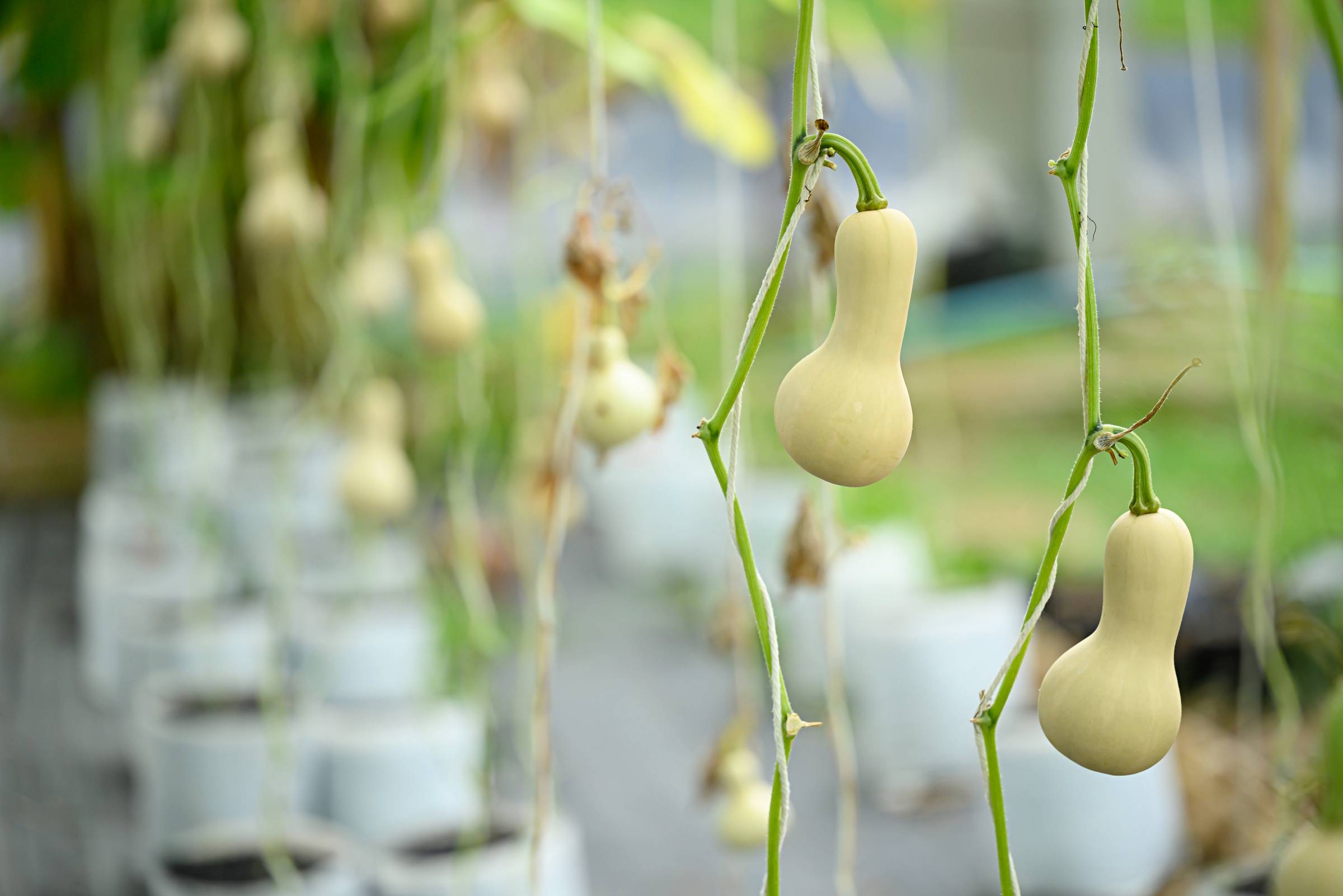
Pumpkins require standard temperature, full sun, and moisture conditions for seedlings. Butternut squashes tolerate some partial shade, making them ideal for the UK climate.
Pumpkins also need more space to grow well, given their sprawling vines and large size. Both need fertile, rich soil. Additionally, an individual pumpkin vine produces a few large pumpkins, whereas a butternut squash vine generates up to ten squashes per plant.
When it comes to pest susceptibility, pumpkins are more prone to squash vine borers and bugs attacking their vines and leaves. Butternuts are mildly less susceptible.
Pumpkin and butternut squash reach maturity in months, but butternut squashes are usually ready to harvest in 70 days compared to 90 days of pumpkin.
Enjoy fresh produce with Airtasker
So, is butternut squash the same as pumpkin? No, but they are both easy to purchase, grow, or store when you sign up with Airtasker. Simply follow these three steps:
Create a free account using an email and a password.
Post a task specifying the produce you want and your timeline and budget.
Get quotes from professionals. Vet them using their profiles, then choose the best.
Ultimately, getting fresh food items doesn’t have to be difficult. Whether you prefer the satisfaction of growing your own produce or the convenience of door-to-door delivery, the platform connects you with the needed resources. Sign up today and get ready to savour the taste of autumn!
Butternut squash vs pumpkin
| Butternut Squash | Pumpkin | |
| Cost | Has a more stable price because it grows year-round |
Offers more flexible budgeting because of its different varieties |
| Appearance | Long neck, bulbous bottom, and yellow or tan skin with bright-orange flesh |
Big, round, with exterior ribbing or ridges; comes in different colours, mainly orange. |
| Taste | Nuttier and richer than a pumpkin |
Sweet, earthy, but stringy and starchy |
| Nutritional Value | Has more fibre, carbohydrates, vitamins C and A, and magnesium |
Contains more protein and calories, as well as riboflavin and vitamin E |
| Versatility | More versatile because it complements a lot of flavours |
Best used as purees and pies and extra texture for soups and other savoury meals |
| Availability | Available year-round but peaks in autumn |
Mainly harvested during autumn |
| Growth Difficulty | Requires less space and is less prone to pests |
Needs plenty of space, full sunlight, and moisture |
FAQs on butternut squash and pumpkin
You can cook these types of winter squash in different ways. For example, you can make pumpkin pie or puree, as well as add pumpkins to meals for added texture. On the other hand, you can enjoy the health benefits of butternut squash when roasted, pureed, and turned into soups.
Both pumpkin and butternut squash can last for over two months. You can extend their shelf life by curing them or storing the produce in a well-ventilated, shady area with a temperature of under 15 degrees Celsius but not lower than 10 degrees Celsius.
Yes, you can eat both pumpkin and butternut squash seeds. They are good sources of healthy fats, but you need to consume them moderately.
Find fresh food delivery, fast
Post a task
Related articles
